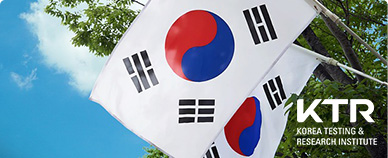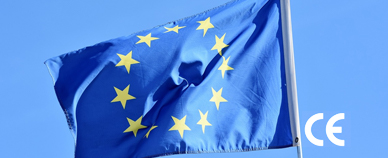Global GHS SDSs and Labelling
Introduction to the GHS service
The Globally Harmonized System of Classification and Labelling of Chemicals (GHS), also known as “ Purple book ”) It is a normative document published by the United Nations in 2003 to guide countries to establish a uniform system of classification and labelling of chemicals, and is therefore often referred to as the United Nations GHS. The UN GHS is revised every two years, with the first revision in 2005 and the current version being the seventh revision in 2017. In 2002, the United Nations World Summit on Sustainable Development encouraged countries to implement GHS before 2008. In order to ensure consistency with the United Nations GHS, countries promulgated corresponding regulations, among which, the European Union issued CLP regulations in 2009, China officially implemented China's GHS in 2011, and the United States officially issued HCS standards in 2012.
Global GHS implementation
In addition to major countries and regions around the world such as the European Union, Japan, South Korea, China, and Brazil, which have already implemented GHS, the United States and Canada will also implement the GHS system uniformly. Taking the United States as an example, starting from June 1, 2015, all SDS and labels must comply with the standards set by the US OSHA, marking the implementation of GHS by major industrialized countries worldwide. It is worth mentioning that although GHS systems are implemented, each country and region has specific requirements, such as language, and some regulatory details may vary, requiring companies to customize for different countries and regions.
Implementation of GHS in China
At present, China has fully implemented GHS, the latest classification standard adopts the UN GHS fourth edition of the standard, fully adopted 28 categories, including 16 physical and chemical hazard classification, 10 health hazard classification and 2 environmental hazard classification. The corresponding documents are GB 30000.2-2013 to GB30000.29-2013, which was officially implemented on November 1, 2014.
Corporate responsibility and obligation
For enterprises, after the implementation of China GHS, the most important obligations are:
1) Registration and updating of GHS compliant hazardous chemicals
The Regulations on the Safety Management of Hazardous Chemicals clearly states that hazardous chemical production enterprises and import enterprises must carry out registration of hazardous chemicals. The registration of hazardous chemicals includes the following contents: classification and labeling information; Physical and chemical properties; Main use; Hazardous characteristics; Safety requirements for storage, use and transportation; Emergency measures to deal with dangerous situations.
2) Provide GHS compliant chemical safety technical specifications and chemical safety labels
The main obligations of the global GHS are: to provide SDS and labels in accordance with the local regulatory language and regulatory requirements
In addition to the European Union, Japan, South Korea, China, Brazil and other major countries and regions in the world have successively implemented GHS, including the United States, Canada will also implement the GHS system. In the United States, for example, from June 1, 2015, all SDS and labels must meet the standards set by the United States OSHA, marking the implementation of GHS in the world's major industrialized countries. It is worth mentioning that despite the implementation of the GHS system, each country and region has specific requirements, such as language, such as the details of some regulations will be different, requiring enterprises to address
SDS Service Description
SDS English full name Safety Data Sheet, that is, chemical safety technical specification, is a comprehensive document on chemical composition information, physical and chemical parameters, explosion performance, toxicity, environmental hazards, as well as safe use mode, storage conditions, leakage emergency treatment, transportation regulations and other information. It is also one of the chemical information transmission carriers under the requirements of national regulations around the world.
When do I need to provide SDS?
Enterprise products are listed in the list of hazardous chemicals, or products are classified as hazardous according to GHS standards, need to proactively provide SDS; Or, although the above conditions are not met, companies also need to pass SDS along their supply chain when the importer actively requests it, or when the industry is more stringent about the classification of substances.
When do I need to update my SDS?
In the following cases, the enterprise needs to update the SDS: with the deepening of the understanding of the substance, the enterprise obtains more physicochemical, toxicological and ecotoxicological information, resulting in the change of the classification label of the substance; Some countries and regions set a transition period for the implementation of regulations, before the transition period, enterprises need to update the substance hazard information description in SDS; After the registration of the EU REACH regulation, the SDS should be expanded into an Extended Safety Data Sheet (eSDS) to incorporate the exposure scenarios in the Chemical Safety Report (CSR) into the eSDS in the form of an annex.

Services we provide
- • UN GHS/ EU CLP/ China GHS Response Training
- • Update product classification according to EU CLP/ China GHS requirements
- • Labels and packaging designed to meet EU and Chinese GHS requirements
- • Production of chemical safety data sheets in line with EU and China GHS requirements
- • Multiple language versions and.html,.doc and other different formats of SDS/MSDS/ tags
- • Existing SDS/MSDS/ label check
Zhongbang is one of the earliest institutions in China to engage in compliance consulting services. It has a senior expert team composed of PhDs, Masters, and Bachelor's degrees, and has established branches in the UK, the United States, South Korea, Beijing, Shanghai, Suzhou, Fuzhou, Shenzhen, and other places, forming a global service network layout.
-
Strong technical strength:
A strong team composed of mid to senior technical personnel with professional backgrounds in chemistry, food nutrition and health, medicine, biology, toxicology, environment, and other fields
-
International service level:
A business elite team with multiple languages including English, Japanese, German, and Chinese, efficiently serving international customers
-
Rich compliance experience:
With years of experience in global product and regulatory research in multiple fields, we are able to provide comprehensive and high-level compliance consulting support to various customers
-
Localized service capabilities:
Having multiple branch offices in the UK, USA, South Korea, Beijing, Shanghai, Suzhou, Fuzhou, Shenzhen, etc., we can provide you with services nearby
Service Hotline :400-115-9001
Zhongbang Consulting (Shandong Zhongbang North Management Consulting Co., Ltd.) focuses on product registration and compliance consulting services. With its professional technology, diverse resources, and global network, we are committed to providing regulatory consulting and environmental regulation response services for pharmaceutical, chemical, consumer goods production enterprises, and large multinational corporations. To solve the environmental, health and safety laws and regulations, product quality standards, and other issues faced by enterprises in production, sales, and global trade processes.
Accumulated Customers
18,000+
Distributed in 35 countries and regions
14year
Industry experience
260+
Senior expert team
15+
Subsidiaries
300+
Collaboration Cases
Brand Cases
The choices and trust of over 18000 customers are the driving force for Zhongbang to continuously improve its services. We are willing to grow together with these excellent enterprises
Service Hotline:400-115-9001






































































 Consultation
Consultation
 400-115-9001
400-115-9001